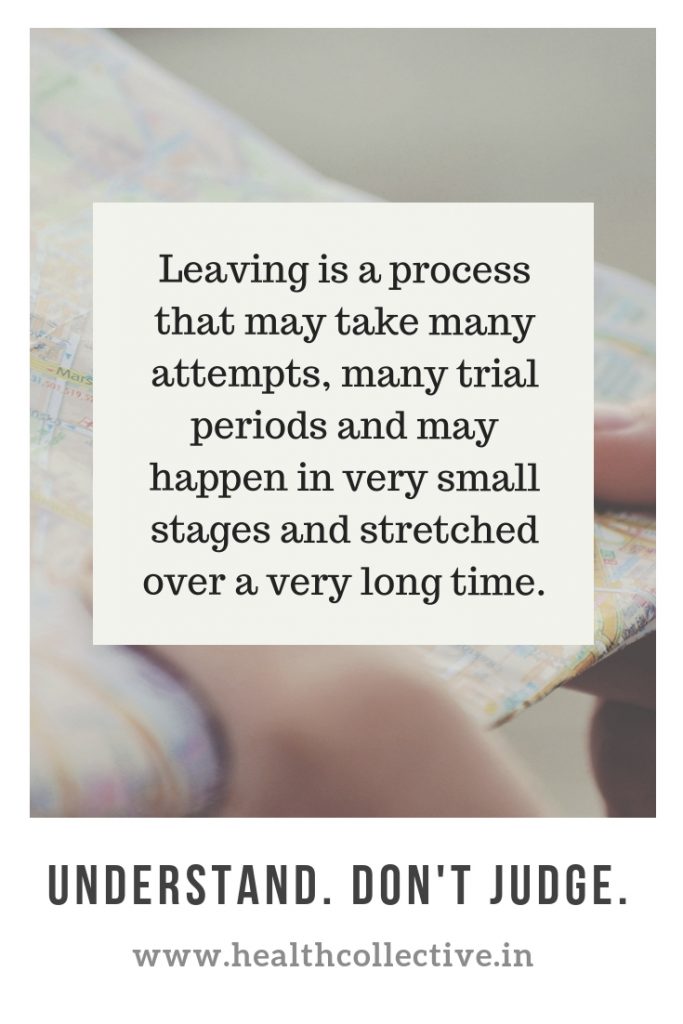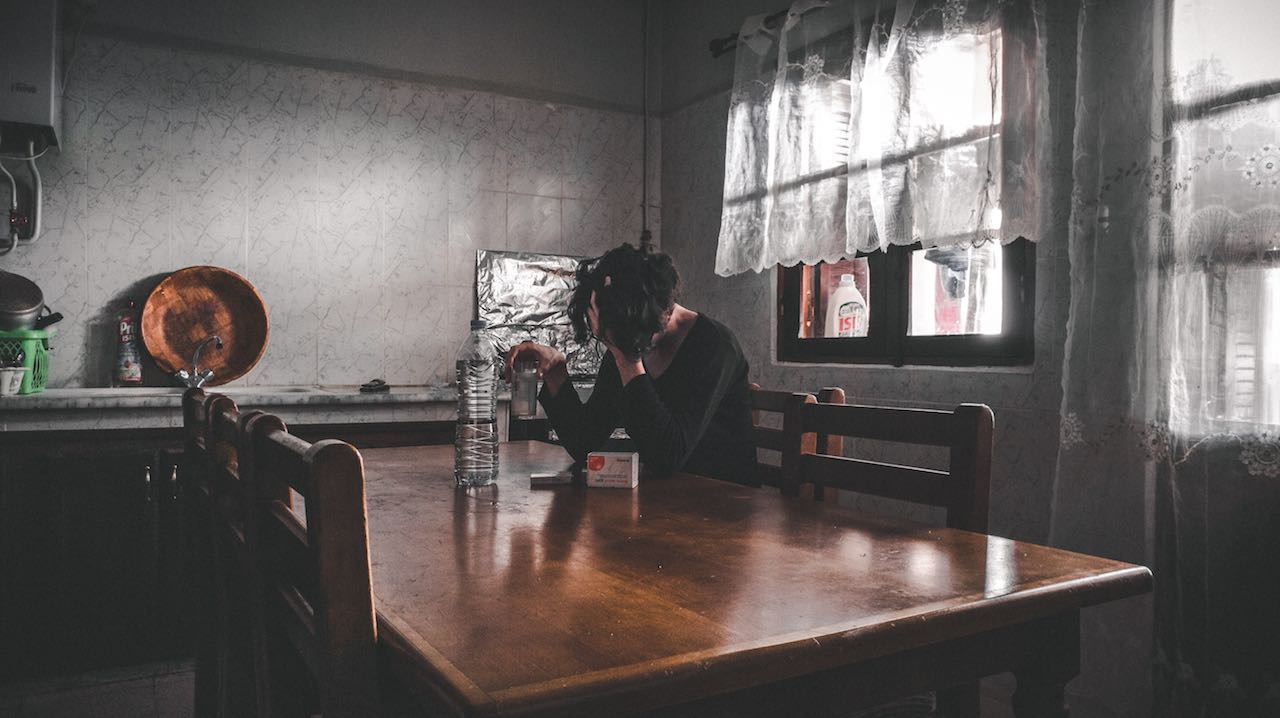Emotional Abuse: Move Past Commentary to Compassion
By Scherezade Siobhan
My client H is a bright-eyed software engineer with an envious fountain of noodle curls for hair. In her first session, we actually bond over the implicit politicisation of women’s hair as she declares she would do anything to have my poker straight tresses to which I respond with my barely contained jealousy for the gorgeous waves flowing out of her head!
H has been coming to therapy for a month after writing a rather curious email about how she needed help, but wasn’t sure if she really needed help. We speak briefly on the phone as is my protocol and she says she is comfortable enough to come meet me in person. When we meet, she refers to a yearlong intimate relationship that was seething with narcissistic abuse from her ex-boyfriend. However, when she mentioned it to anyone, the response directed towards her was mostly to the tune of “all couples fight” and/or it was just “personality differences” or worse, “men are like that only” .
In the time she spent with him, he regularly berated her for her body to the point where she had started purging and was on the verge of developing an eating disorder. Eventually when the psychological trauma had skyrocketed beyond her capacity to withstand it anymore, she decided to end things and even moved cities because she found it hard to start her life over living anywhere close to her former partner. The other reason for changing zip codes was also an underlying fear that her ex would stalk and harass her as he had done in previous attempts towards separation. The startling reason she stated as to why wasn’t sure she needed counselling – “But he didn’t really hit me or anything so I don’t want to whine or feel like am taking up space in therapy when probably someone who has had it much worse needs more help. Isn’t abuse only real when someone puts their hands on you?”
This is a frightfully common story stretching across so many of the therapeutic cases I am handling at the moment. The idea of abuse is internalised as well as equated with visible violence—conspicuous and tangible in a very corporeal sense. This is a nefarious myth on every scale; scientific, social, emotional and even physical.
ALSO READ: TEN THINGS TO KNOW ABOUT DOMESTIC VIOLENCE
Recently, we have seen a surge in the number of women who have come forth with their survival stories in context to various aspects of abuse, assault and gendered/sexualised violence as part of the second wave of #metoo movement in India. These stories have to be recognised as authentic on a continuum, but the detractors of the movement have been rather vociferous in trying to box away very diverse individual experiences into unconvincing binaries.
Emotions themselves are experienced by a form of gradation, so to speak. We don’t experience the same emotion with the same intensity in every situation that brings forth that specific emotion. My anger at a stranger cutting me off in traffic would be very different from my anger at my child making a mess in my kitchen while I am on the phone.
Emotional responses and the subsequently associated behavioural patterns are a function of our neurobiology, personal experiences, attachment patterns through childhood into adulthood (various fluxes in our psycho-social growth), and most importantly cultural and environmental stimuli-response interrelation and dynamics among other things.
This is also why emotional abuse is, in fact, more complex and has harsher long-term impact in some cases because of its multiformity across one’s lifespan.
These are pretty resonant reasons for why we need to be avoid stigmatisation when it comes to someone talking about psychological and emotional abuse. In a session, even a trained psy-ops operative will tell you— emotional trauma can often function like a hidden landmine and that it is the usually the last step in a torture making it the most potent.
ALSO READ: HOW DOES THERAPY WORK?
Let’s understand this in the simplest way possible— emotional abuse IS abuse. There are clear and precise indictments to be had since it is a punishable offence. The Mental Healthcare Act, 2017 very categorically references verbal and emotional abuse along with physical and sexual abuse while stating the rights of an individual in seeking protection against cruel, inhuman and degrading treatment.
However, a lot of uninformed opinionating by folks whose claim to fame is a social media platform and a significant audience— who are neither mental health nor legal specialists, care-givers nor survivors— does tantamount to direct gaslighting when they try to clamp down on the voices of survivors/victims.
If we disregard emotional abuse by shifting the entire onus of it to the victim/survivor, then it is a grave error in our fight against striking down toxic gender hierarchies and power differentials. Nothing in our socio-cultural and psychological worlds can aim for a significant change until we recognize the pervasive nature of gendered violence and abuse.
Here are two critical ways to consider how emotional abuse impacts a survivor/victim.
Neuropsychology: Our brains’ emotion processing functions are often regulated by what we have named the limbic system. A part of this limbic system is called the hippocampus and it is located in the medial temporal region. The hippocampus is responsible for memory organisation, development and storage. Apart from this, it is also plays an important role in learning, particularly spatial navigation. In studies conducted at Stanford as well as the University of New Orleans, neuroscientists have established a direct correlation between the levels of cortisol (a stress hormone) and the reduction in the volume of the hippocampus. An increase in cortisol leads to a decrease in the volume of Hippocampus in children who experienced emotionally abusive homes. Located close to the hippocampus is a collection of neurons called the amygdala. Shaped like an almond and in fact named after it as well, the amygdala is located in the medial temporal lobe. It is generally considered to be the seat of processing emotions. Most of us have heard of the flight or fight (or freeze) theory of dealing with fear/stress.
It is within the amygdala that the decision for choosing a response to a fear-inducing situation is made. Consistent exposure to emotional and psychological abuse—even when accompanied by physical abuse—keeps the amygdala in a constant state of panic and fear which eventually leads to heightened state or “hyper-arousal” around any emotional event. This means that the amygdala enlarges in a person experiencing emotional abuse in the case of intimate partner violence, for example. As a result, said individual may not be able to get out of the abusive situation without some external anchoring or a support system because their own neurobiology has been tampered with, leading to reduced abilities for coherent decision making and emotional comprehension. So no, it is not a simple choice to leave.
Social Psychology: We cannot disregard the social character of emotional abuse. Powers are vested in an abusive person or group on account of socio-cultural privileges. Deference is encouraged in patriarchal hierarchies that function entirely on subjugation and marginalisation of certain segments of our society in order to establish supremacy for others. Workplace harassment and abuse are often constructed on a Machiavellian interpretation of the pecking order. Aggression is considered synonymous with leadership and is not only supported but also encouraged and awarded. I was on a consulting project with one of the foremost banks in India and their C-suite or CEO’s direct reporting team only had 2 women. Throughout the organisation, both the women were labelled as undeserving and having gotten so far merely due to “diversity politics”.
One of them was routinely subjected to character assassination because she was quite presentable, basically wore bright red lipstick daily and did not concede to men easily. This is a seemingly minor thing but it has profound psychological impact for an entire workforce of women who are privy to such complicity. In situations such as these, someone who is disenfranchised on account of gender, class, caste, sexuality et al is often not left with many choices if there is no community support.
In another assignment, I was working on a large-scale project for a Fortune 500 company. In their lavishly designed bathrooms, the attendants were women (most of them from underprivileged castes) who were underpaid and overworked, and not allowed to sit during their 10 hour shifts. When I asked them why they were not allowed to sit, they had no real reasons except that it was a part of the “discipline”. I had an infuriating conversation with their administration head who failed to see them as people and counted them as property. In fact, he was ignorant enough to posture an argument that it is still better to stand in an air-conditioned bathroom in a high-rise, than work as a daily wage labourer in a quarry. I had to threaten to report their labour practices and of course, remind him that it is a completely self-defeating debate which banks itself on finding lowest common denominators for social justice instead of recognising how entire structures enable such practices.
When someone experiences emotional and/or psychological abuse, they are also dissonant on account of the conditioning where we are told that dire abuse always physical or else it is not valid.
Why don’t you leave? — a frequent chant.
Here is why.
Dissociation: When the trauma of emotional abuse crosses all thresholds, some people dissociate as an adaptive response for survival. It is linked to the freezing aspect of fight/flight mechanism I mentioned earlier. Clients who were in long-term abusive relationships often mention how they’d just feel that they were no longer inhabiting their bodies when the verbal slanging would pierce their self-esteem. Someone in therapy recently mentioned how when the yelling and screaming would commence, she would look up at the tiny patch of sky from her window and imagine she was a part of it. “I didn’t have anywhere to go if I left him. I had moved from a small town to Bombay to be with him and even if I had to find my own place, I would need to save money for at least 6 months or so. Till then, what option did I have?”
Avoidance: A conditioned response to prolonged trauma is avoidance. An abuser can groom a victim to believe that the abuse is not real if she can avoid thinking about it or speaking about it. The victim in turn starts to believe this and in fact avoidance continues a lot later, even after leaving the abusive relationship. There is also repression on account of traumatising memories from past abuse.
Denial: Denial is a way through which a survivor/victim might process her own experience of abuse which directly addresses the question of “why are they speaking about it a decade later?” That’s simply because denial is how survivor tries to forget what happened. No one wants to relive the pain of the past and denial is used as a coping mechanism in these cases especially when they don’t have access to proper mental health help. Denial is fairly common among survivors of childhood abuse and I can vouch for it as a survivor myself.
Projection: Abusers groom their victims and in some cases, make them believe that they have redeeming, positive qualities outside of their abusive phases. The victim is often psychologically or socially isolated and thereby begins to trust the abusive person’s self-image. They start to project their need for compassion and empathy on to an abusive person and believe that there will be redemption if only they can wait it out.
Compartmentalisation: One of my clients mentioned how she’d go to the kitchen to start cooking a good meal when her husband would spiral into alcoholism-fuelled rage fits. Though about 80% of their time spent together was deeply emotionally traumatising for her, he liked her cooking and she felt that if she’d cook him a decent meal, he’d be kinder to her. There was no real precedent for it but she used this as an oar to guide her boat out of the storm. A lot of times people separate the abusive traits from other parts of the relationship which are not as prominently abusive and focus on that as opposed to looking at the whole picture.
As one can perceive, there is no a cut-and-dry approach to working your way through emotional abuse and trauma. It is real, it is valid and these facts are non-negotiable. Whatever our opinion about it may be, it can’t occupy more space than someone who has lived through it or is currently living with it. While we see how psychological harassment is still a contentious subject for conversation, downright negation or suppression of a victim/survivor’s voice without a nuanced understanding of how abuse and trauma slither across a spectrum is insidious and selfish. One size doesn’t fit all and we need to engage with these stories from a place of radical compassion and equally radical vulnerability.
References:
https://indiacode.nic.in/bitstream/123456789/2249/1/A2017-10.pdf
https://news.stanford.edu/news/2007/march7/med-carrion-030707.html
Scherezade Siobhan is the founder of The Talking Compass — a therapeutic practice that provides in-person, at-home and online counselling for people who need help with emotional and mental health.
Disclaimer: Material on The Health Collective cannot substitute for expert advice from a trained professional. If you would like to share your story, do write to us here or tweet us @healthcollectif
Feature Image by rawpixel.com




Pingback: Emotional Abuse: Conversation and Closure
Hello, of course this article is truly pleasant and I have learned lot of things from it on the
topic of blogging. thanks.